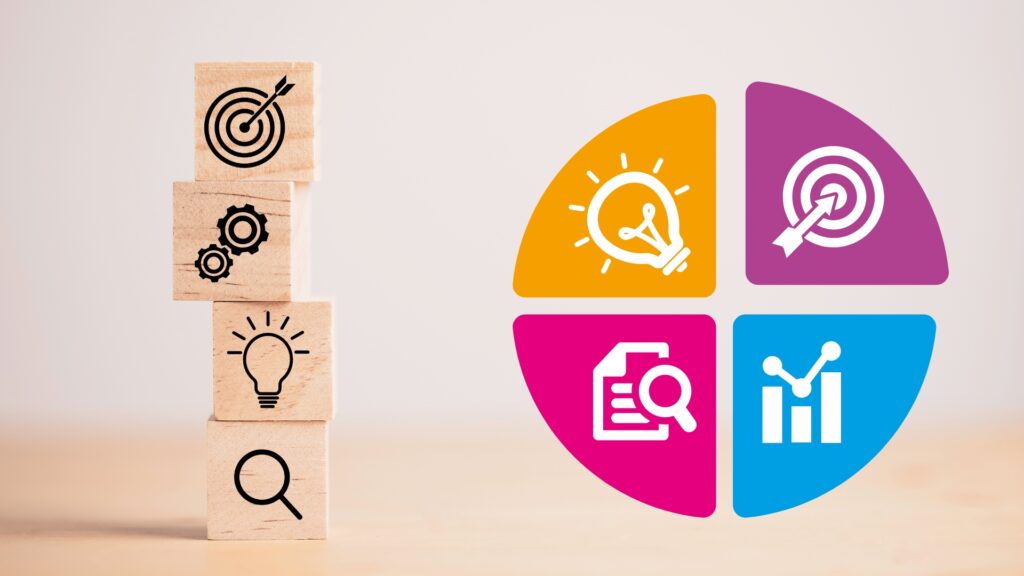“Your mind is a powerful thing. When you fill it with positive thoughts, your life will start to change.” This quote captures the essence of positive thinking and its transformative impact. Imagine waking up each day with a sense of optimism and confidence, ready to tackle challenges and embrace opportunities. This is not just a utopian dream but a realistic outcome of cultivating a positive mindset.

Positive thinking is more than just plastering a smile on your face; it’s a mental attitude that focuses on the bright side of life and expects positive results. Research has shown that a positive mindset can significantly improve mental health, boost physical well-being, and enhance social relationships. The power of positive thinking lies in its ability to reshape our perceptions, turning obstacles into opportunities and setbacks into setups for comebacks.
In this blog, we will explore the concept of positive thinking, its numerous benefits, and practical strategies to develop and maintain a positive mindset. By understanding and applying these principles, you can unlock a happier, healthier, and more fulfilling life. Let’s embark on this journey towards a brighter outlook and a better you
Section 1: Understanding Positive Thinking
What is Positive Thinking?

Positive thinking is the practice of focusing on the good in any given situation. It involves maintaining an optimistic attitude, expecting favorable outcomes, and believing in your ability to overcome challenges. Positive thinking is not about ignoring reality or avoiding negative emotions, but rather about approaching life’s difficulties with a constructive and hopeful mindset. This approach helps individuals to view setbacks as temporary and solvable, fostering resilience and a proactive attitude towards life.
Brief History of Positive Thinking in Psychology

The concept of positive thinking has roots in early philosophical and religious traditions, but it gained prominence in psychology with the advent of the humanistic movement in the mid-20th century. Psychologists like Carl Rogers and Abraham Maslow emphasized the importance of self-actualization and positive potential. Later, Martin Seligman, often referred to as the father of positive psychology, spearheaded the movement by focusing on what makes life worth living and how people can cultivate happiness and fulfillment. His work highlighted the importance of positive emotions, strengths, and virtues, shifting the focus from pathology to well-being.
Studies and Research Supporting the Benefits of Positive Thinking

Numerous studies have demonstrated the profound impact of positive thinking on various aspects of life. Research shows that individuals with a positive outlook are more resilient in the face of stress and adversity. A study published in the Journal of Personality and Social Psychology found that positive emotions can help people recover from stress faster and build long-term resilience. Furthermore, positive thinking has been linked to better physical health outcomes, including improved immune function and lower rates of cardiovascular disease. The American Journal of Epidemiology reported that optimistic individuals had a lower risk of dying from major illnesses, highlighting the connection between a positive mindset and longevity.
Section 2: Benefits of a Positive Mindset
Mental Health: Reduction in Stress, Anxiety, and Depression

Adopting a positive mindset can significantly reduce stress levels, lower anxiety, and decrease the likelihood of depression. By focusing on positive outcomes and solutions, individuals can manage their stress more effectively and maintain a more balanced emotional state. Positive thinking encourages adaptive coping strategies, such as problem-solving and seeking support, which can mitigate the effects of stress and anxiety.
Physical Health: Improved Immune Function, Reduced Risk of Chronic Diseases

A positive outlook can have tangible benefits for physical health. Studies have shown that individuals who engage in positive thinking tend to have stronger immune systems, making them less susceptible to illnesses. Additionally, a positive mindset is associated with a reduced risk of chronic diseases such as heart disease and hypertension. By lowering stress levels and promoting healthier behaviors, positive thinking contributes to overall physical well-being.
Emotional Well-being: Increased Happiness, Life Satisfaction, and Resilience

Positive thinking enhances emotional well-being by increasing levels of happiness and life satisfaction. Individuals who focus on the positives are more likely to experience joy, contentment, and a sense of fulfillment. This mindset also fosters resilience, enabling people to bounce back from setbacks and maintain a stable emotional equilibrium even in challenging times.
Social Benefits: Better Relationships and Social Interactions

A positive mindset can improve social interactions and relationships. People who think positively are often more approachable, empathetic, and supportive, which helps build stronger connections with others. Positive thinking promotes effective communication and conflict resolution, leading to healthier and more fulfilling relationships.
Section 3: Barriers to Positive Thinking

Common Obstacles: Negative Self-talk, Pessimism, and External Influences
Negative self-talk, or the habit of focusing on one’s flaws and mistakes, can be a significant barrier to positive thinking. Pessimism, or the tendency to expect the worst, can also hinder the development of a positive mindset. External influences, such as negative media and toxic people, can further exacerbate these obstacles by reinforcing negative thought patterns.
Psychological Barriers: Cognitive Distortions and Mental Health Issues
Cognitive distortions, such as all-or-nothing thinking, catastrophizing, and overgeneralization, can make it challenging to maintain a positive outlook. These distorted thinking patterns can create a cycle of negativity that is difficult to break. Additionally, mental health issues such as depression and anxiety can significantly impede the ability to think positively, as they often involve pervasive negative thoughts and emotions.
Social and Environmental Barriers: Toxic Relationships and Stressful Environments
Toxic relationships and stressful environments can undermine efforts to cultivate a positive mindset. Being surrounded by negative or critical individuals can erode self-esteem and reinforce pessimism. Similarly, environments characterized by high stress, conflict, or instability can make it difficult to maintain a positive outlook. Addressing these external factors is crucial for fostering and sustaining positive thinking.
Section 4: Strategies to Cultivate a Positive Mindset

Self-awareness Practices: Journaling, Meditation, and Mindfulness
Self-awareness is the foundation of positive thinking. Practices like journaling, meditation, and mindfulness help individuals become more aware of their thoughts and emotions. Journaling allows you to reflect on your daily experiences and identify patterns in your thinking. Meditation and mindfulness encourage a present-moment awareness that reduces stress and enhances emotional clarity. By regularly engaging in these practices, you can cultivate a greater understanding of your internal world and develop the ability to steer your thoughts in a positive direction.
Positive Affirmations: How to Create and Use Them Effectively
Positive affirmations are statements that reinforce optimistic beliefs and attitudes. To create effective affirmations, focus on areas where you seek improvement and frame your statements in the present tense, such as “I am confident and capable.” Repetition is key; regularly repeating affirmations can help rewire your brain to adopt these positive beliefs. Incorporate affirmations into your daily routine, such as during your morning ritual or before important tasks, to boost your confidence and outlook.
Gratitude Practices: Keeping a Gratitude Journal, Daily Gratitude Exercises

Gratitude practices are powerful tools for fostering a positive mindset. Keeping a gratitude journal involves writing down things you are thankful for each day, which helps shift your focus from what is lacking to what is abundant in your life. Daily gratitude exercises, such as sharing what you are grateful for with a friend or reflecting on positive experiences before bed, can further embed a sense of appreciation and positivity into your daily life.
Visualization Techniques: Imagining Positive Outcomes and Future Successes
Visualization involves mentally picturing positive outcomes and future successes. This technique harnesses the power of imagination to create a vivid picture of your goals and aspirations. By regularly visualizing your desired outcomes, you can increase your motivation and confidence. Visualization can be practiced during meditation or as a standalone exercise, helping to align your mental focus with your ambitions.

Surrounding Yourself with Positivity: Building a Supportive Network, Consuming Positive Media
The people and media you surround yourself with can significantly impact your mindset. Building a supportive network of positive, encouraging individuals can provide emotional support and inspiration. Additionally, consuming positive media, such as motivational books, podcasts, and videos, can reinforce optimistic thinking and provide practical insights into maintaining a positive attitude.
Section 5: Daily Habits for Maintaining Positivity
Morning Routines: Starting the Day with Positive Practices

Starting your day with positive practices can set the tone for the rest of the day. Incorporate activities like stretching, meditation, or reading inspirational content into your morning routine. These habits can help you begin the day with a calm and focused mindset, making it easier to handle challenges with a positive attitude.
Mindful Living: Being Present and Appreciating the Moment
Mindful living involves being fully present in each moment and appreciating the simple joys of life. This practice can reduce stress and enhance your overall sense of well-being. Techniques such as mindful eating, where you savor each bite and focus on the flavors, or mindful walking, where you pay attention to your surroundings, can help integrate mindfulness into your daily life.
Physical Activity: Exercise and Its Role in Boosting Mood
Regular physical activity is a natural mood booster. Exercise releases endorphins, which are chemicals in the brain that act as natural painkillers and mood elevators. Whether it’s a daily walk, yoga session, or gym workout, incorporating physical activity into your routine can enhance your mental and emotional well-being.
Healthy Lifestyle Choices: Nutrition, Sleep, and Self-care
A healthy lifestyle supports a positive mindset. Eating a balanced diet rich in nutrients fuels your body and brain, promoting optimal functioning. Adequate sleep is crucial for emotional regulation and mental clarity. Additionally, self-care practices, such as taking time for hobbies, relaxation, and social activities, can reduce stress and improve your overall quality of life.
Section 6: Overcoming Negative Thinking Patterns
Cognitive Behavioral Techniques: Challenging and Reframing Negative Thoughts

Cognitive Behavioral Therapy (CBT) techniques are effective for challenging and reframing negative thoughts. This involves identifying irrational or unhelpful thoughts and replacing them with more balanced and constructive ones. For example, if you catch yourself thinking, “I always fail,” you can reframe it to, “I have faced challenges before and overcome them.”
Stress Management: Techniques for Managing Stress Effectively
Effective stress management is crucial for maintaining a positive mindset. Techniques such as deep breathing, progressive muscle relaxation, and time management can help reduce stress levels. Additionally, finding healthy outlets for stress, like exercise or creative activities, can help you manage stress more effectively.
Emotional Regulation: Practices for Maintaining Emotional Balance
Emotional regulation involves managing your emotional responses in a healthy way. Practices such as mindfulness, deep breathing, and journaling can help you stay calm and balanced. Learning to recognize and name your emotions can also prevent them from overwhelming you, allowing for more thoughtful and positive reactions to life’s challenges.
Section 7: Real-Life Examples and Success Stories
Stories of Individuals Who Transformed Their Lives Through Positive Thinking

Real-life case studies can provide powerful inspiration and practical insights. For instance, stories of individuals who overcame adversity through positive thinking can illustrate the tangible benefits of a positive mindset. These examples can serve as motivation and proof that change is possible.
Insights from Experts in Psychology and Personal Development
Interviews with experts in psychology and personal development can offer valuable perspectives and strategies. These experts can share their knowledge on how to cultivate a positive mindset and maintain it over time, providing readers with expert-backed advice.
Sharing Your Own Journey and Experiences with Positive Thinking
Sharing your personal journey with positive thinking can create a connection with your readers. By recounting your experiences, challenges, and successes, you can offer a relatable and authentic perspective. Your story can serve as a testament to the power of positive thinking and encourage others to embark on their own journeys.
Conclusion
Throughout this blog, we’ve explored the transformative power of positive thinking and its numerous benefits. By understanding the essence of positive thinking, we can see how a constructive mindset leads to better mental and physical health, greater emotional well-being, and improved social interactions. We delved into practical strategies for cultivating a positive mindset, including self-awareness practices like journaling and meditation, the use of positive affirmations, gratitude exercises, visualization techniques, and surrounding oneself with positivity. We also discussed daily habits that help maintain positivity, such as establishing uplifting morning routines, practicing mindful living, engaging in regular physical activity, and making healthy lifestyle choices. Finally, we covered methods to overcome negative thinking patterns, including cognitive behavioral techniques, effective stress management, and emotional regulation.
Embarking on the journey to cultivate a positive mindset may seem daunting, but remember that every small step counts. By consistently applying the strategies discussed, you will gradually build a more resilient and optimistic outlook. Positive thinking is not about denying reality but about empowering yourself to handle life’s challenges with grace and confidence. Believe in your ability to transform your mindset and watch as it positively impacts every aspect of your life.
We invite you to join the conversation and share your experiences with positive thinking. Have you tried any of the strategies mentioned? What has worked for you, and what challenges have you faced? Your insights and stories can inspire and support others on their journey. Leave your comments below and let’s create a community of positivity and growth together.
Additional Resources
Books: Recommended Reading on Positive Thinking and Mindset
The Power of Positive Thinking by Norman Vincent Peale
Think and Grow Rich by Napoleon Hill
The Happiness Advantage by Shawn Achor
Learned Optimism: How to Change Your Mind and Your Life by Martin Seligman
You Are a Badass: How to Stop Doubting Your Greatness and Start Living an Awesome Life by Jen Sincero
Online Courses: Links to Courses for Further Learning
Coursera – Positive Psychology Specialization by the University of Pennsylvania
Udemy – The Science of Well-Being by Yale University
Mindvalley – Becoming Limitless by Vishen Lakhiani
edX – The Science of Happiness by UC Berkeley
Support Groups and Communities: Online Forums and Local Groups for Support
Reddit – r/PositiveThinking: A community dedicated to sharing and discussing positive thinking strategies.
Meetup – Search for local groups focusing on personal development and positive mindset.
Facebook Groups – Join groups such as “Positive Thinking & Self Improvement” for daily motivation and support.
The Happiness Project – An online community where members share their happiness journeys and tips.
References
Journal of Personality and Social Psychology: Study on the role of positive emotions in resilience.
American Journal of Epidemiology: Research on optimism and longevity.
Peale, Norman Vincent. The Power of Positive Thinking. New York: Fireside, 2003.
Hill, Napoleon. Think and Grow Rich. New York: Ballantine Books, 2005.
Seligman, Martin E.P. Learned Optimism: How to Change Your Mind and Your Life. New York: Vintage Books, 2006.
By integrating these insights and resources into your life, you can unlock the full potential of positive thinking. Embrace the journey, share your progress, and let’s build a community centered on growth, resilience, and optimism.


